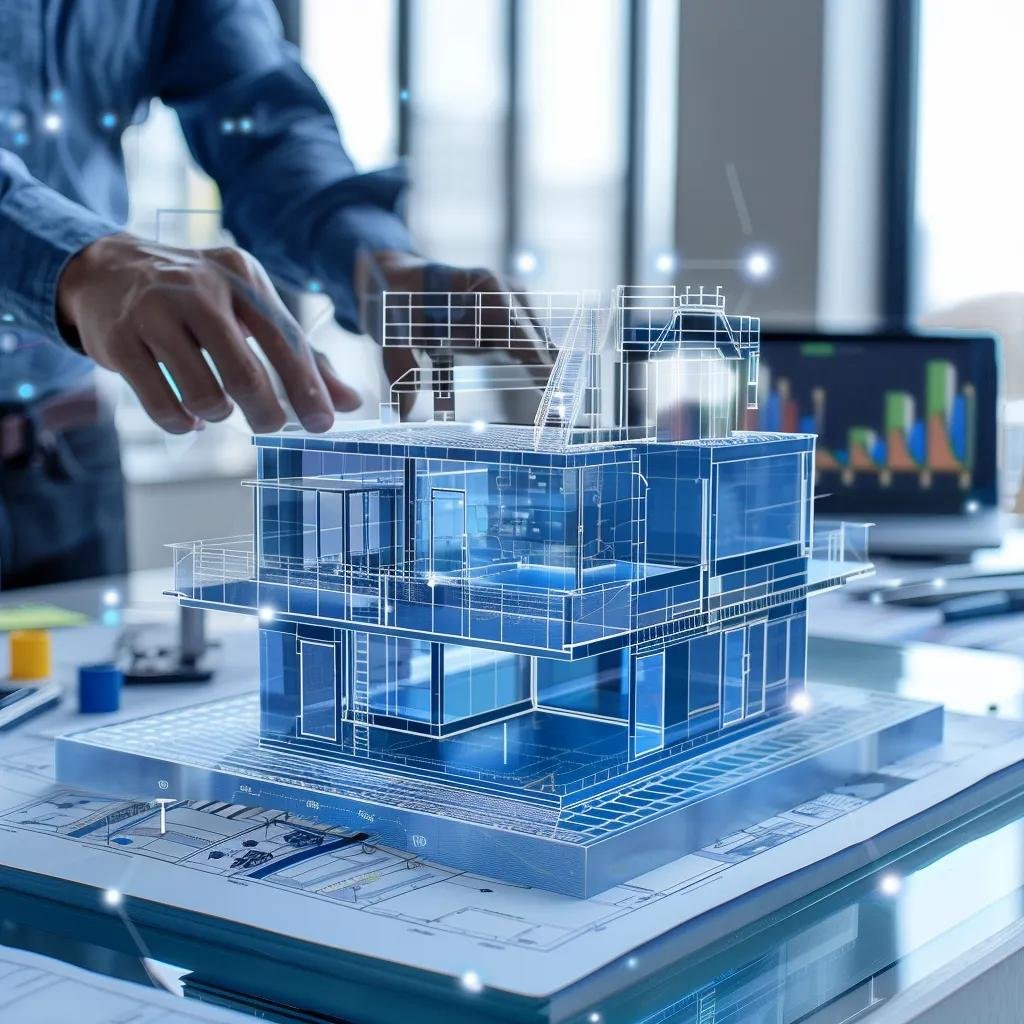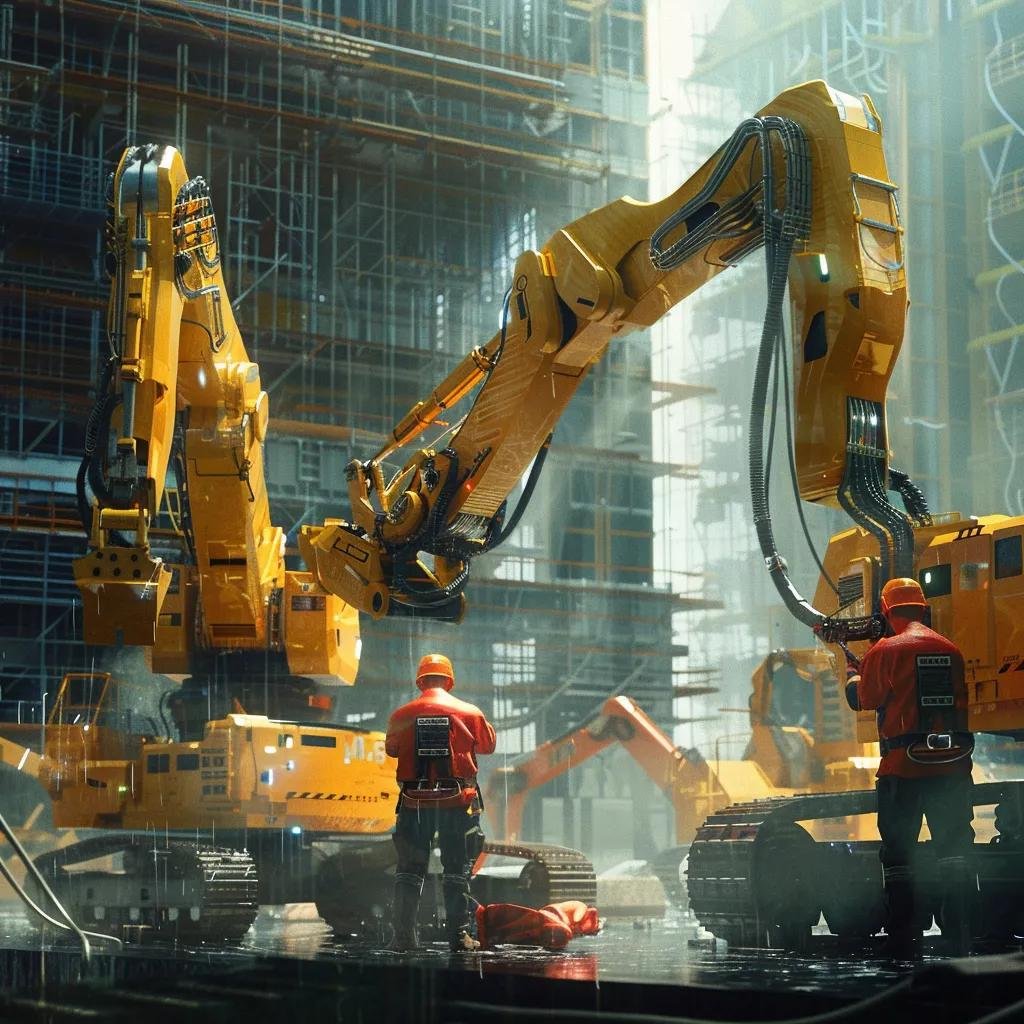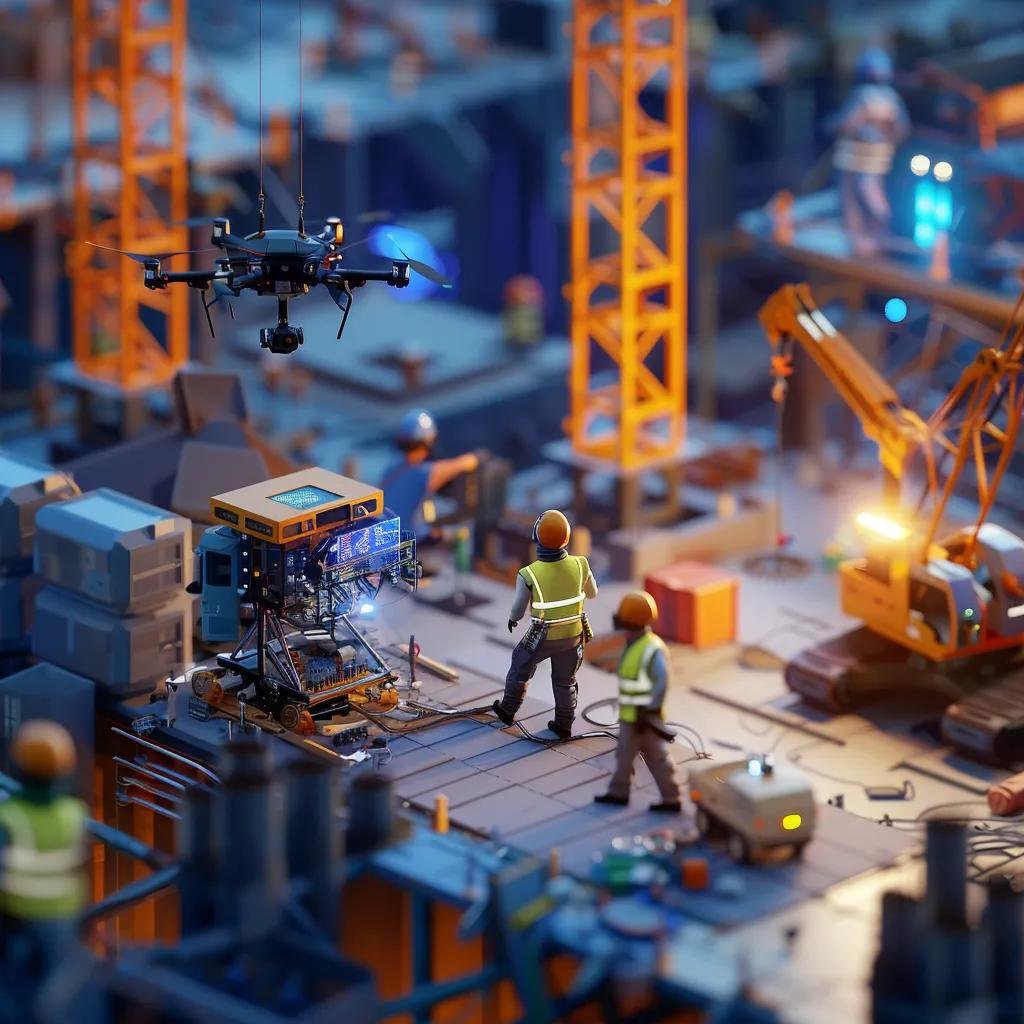Emerging Technologies Transforming Commercial Construction: Key Innovations and Industry Impact
Commercial construction is entering a new era where technology adoption accelerates project delivery, enhances safety, and drives sustainability. By 2030, global construction output is projected to reach $15.5 trillion, powered by innovations such as Building Information Modeling (BIM), artificial intelligence, drones, robotics, and smart building systems. This surge creates opportunities—and complexities—for facility readiness, maintenance, and specialized services like commercial air duct cleaning. In this guide, readers will discover:
- What the most influential emerging technologies are and how they function
- How BIM, digital twins, automation, AR/VR, drones, and IoT drive efficiency
- The impact of these technologies on cleaning and maintenance needs
- Future challenges and competitive strategies for technology-driven construction
Understanding these innovations helps businesses optimize operations, ensure system hygiene, and connect with experts in air duct and commercial cleaning services.
Emerging Tech Innovations Reshaping Commercial Construction
Emerging technologies in commercial construction are digital and automated solutions that streamline design, planning, and execution by integrating data, robotics, and connectivity to improve project outcomes. These innovations transform workflows by automating repetitive tasks, enabling real-time monitoring, and enhancing decision-making through analytics. For example, integrating artificial intelligence with BIM models reduces clashes and accelerates schedule optimization while ensuring safety compliance.
Below are the top five influential innovations ranked by adoption and impact:
- Building Information Modeling (BIM): 3D model–driven collaboration for design, cost control, and clash detection.
- Artificial Intelligence (AI): Predictive analytics and resource allocation to boost productivity.
- Drones: Aerial imaging and thermal scanning for accurate site surveys and progress tracking.
- Robotics & Automation: Automated bricklaying, material handling, and prefabrication for labor efficiency.
- Augmented Reality (AR) & Virtual Reality (VR): Immersive visualization for design validation and safety training.
These core technologies lay the groundwork for digital twins, IoT-enabled smart buildings, and 3D printing, setting the stage for facility management and specialized service considerations in later sections.
How Does Building Information Modeling (BIM) Revolutionize Project Management?

Building Information Modeling (BIM) is a digital representation of physical and functional characteristics of a facility that enhances collaboration by linking 3D geometry with data attributes for scheduling, cost estimation, and maintenance planning. By enabling clash detection and real-time change management, BIM reduces rework by up to 40 percent and accelerates procurement decisions.
This model-centric approach also provides facility managers with maintenance schedules and system specifications for HVAC, electrical, and structural elements, seamlessly leading into digital twin integration.
BIM's Impact on Project Management
Building Information Modeling (BIM) enhances project management by providing a digital representation of a facility’s physical and functional characteristics. This approach facilitates collaboration, clash detection, and real-time change management, potentially reducing rework and accelerating procurement decisions.
This research supports the article’s claims about BIM’s role in streamlining project management and reducing errors.
In What Ways Is Artificial Intelligence (AI) Enhancing Construction Efficiency?

Artificial Intelligence (AI) applies machine learning and predictive analytics to project planning, risk management, and resource optimization by analyzing historical data and current site conditions. AI-driven algorithms forecast equipment needs, predict material shortages, and detect safety hazards before they occur, improving on-site productivity by up to 25 percent. These capabilities integrate with robotics and scheduling platforms, reducing downtime and advancing automated equipment control.
AI's Role in Construction Efficiency
Artificial Intelligence (AI) is enhancing construction efficiency through predictive analytics and resource optimization. AI-driven algorithms analyze historical data and current site conditions to forecast equipment needs, predict material shortages, and detect safety hazards, thereby improving on-site productivity.
This source provides evidence for the article’s discussion of AI’s impact on construction processes.
How Are Drones Improving Site Monitoring and Data Collection?
Drones are unmanned aerial systems equipped with high-resolution cameras, LiDAR, and thermal sensors that survey construction sites faster and more safely than manual inspections. By capturing georeferenced imagery and 3D terrain maps, drones accelerate topographic surveys and progress reporting, cutting survey time by up to 80 percent. Detailed drone data feeds into BIM platforms and analytics tools, enabling data-driven decision making and proactive issue resolution.
What Role Do Robotics and Automation Play in Modern Construction?
Robotics and automation encompass robotic bricklaying, autonomous material transport, and prefabrication lines that mechanize repetitive tasks to increase precision and reduce labor costs. Automated guided vehicles (AGVs) deliver materials on demand, while robotic arms handle welding, panel installation, and concrete dispensing. These systems enhance workforce safety, deliver consistent quality, and free skilled labor for complex tasks, demonstrating direct productivity gains and site safety improvements.
How Are Augmented Reality (AR) and Virtual Reality (VR) Transforming Construction Visualization?
Augmented Reality (AR) overlays digital models onto physical workspaces through wearable devices, enabling on-site teams to validate installations against design specifications and identify clashes in real time. Virtual Reality (VR) immerses stakeholders in fully rendered project walkthroughs for design approvals and safety training simulations. Together, AR/VR reduce design errors, accelerate client sign-off cycles, and foster hands-on safety education, bridging the gap between planning and execution.
How Is Building Information Modeling (BIM) Driving Innovation in Commercial Construction?
Building Information Modeling (BIM) drives innovation by creating a shared knowledge resource that integrates geometry, spatial relationships, and system data across the project lifecycle. This approach centralizes information for architects, engineers, and contractors, reducing errors and fostering transparency.
| Entity | Attribute | Value |
|---|---|---|
| BIM | Collaboration | Real-time clash detection and model coordination across disciplines |
| BIM | Cost Management | Automated quantity takeoffs and budget forecasting |
| BIM | Lifecycle Insights | Data-driven facility operation schedules and maintenance logs |
| BIM + Digital Twin | Integration | Live sensor feeds update digital twin models for performance monitoring |
| BIM | Sustainability Support | Energy analysis, material optimization, and carbon footprint simulation |
This table highlights BIM’s multifaceted role in cost control, collaboration, and sustainability, setting up a seamless transition into how BIM integrates with digital twins and supports green building practices.
What Are the Benefits of BIM for Project Lifecycle Management?
BIM enhances project lifecycle management by consolidating design, construction, and operational data into a unified platform that streamlines handoffs, tracks revisions, and automates maintenance planning. This consolidated digital record reduces facility downtime and supports predictive maintenance strategies.
How Does BIM Integrate with Digital Twins for Facility Management?
BIM integrates with digital twins by linking the 3D model to real-time sensor data—such as temperature, humidity, and energy consumption—creating a live replica of building performance. This integration enables facility managers to monitor system health, anticipate failures, and optimize operations remotely.
How Does BIM Support Sustainable Construction Practices?
BIM supports sustainability by enabling carbon and energy analysis early in the design phase, allowing teams to compare material choices, optimize building orientation, and model daylight harvesting. This proactive approach reduces waste and lowers operational energy use.
What Are the Latest Trends in Automation and Robotics in Commercial Construction?
Automation and robotics trends focus on modular construction, robotics in prefabrication, and AI-driven machinery coordination to streamline site workflows and improve safety. Emerging systems emphasize interoperability and autonomous decision making.
Below is a summary of leading robotics applications on commercial sites:
- Robotic bricklaying that places and mortars bricks with millimeter precision.
- Automated rebar tying machines that cut labor time for steel reinforcement.
- AGVs for just-in-time material delivery within complex job sites.
Which Robotic Applications Are Most Common on Construction Sites?
Robotic bricklaying systems, concrete-pumping drones, and automatic rebar tiers are increasingly common, addressing repetitive tasks while reducing worker fatigue and injury risk. These robots handle hundreds of bricks per hour and tie thousands of reinforcement intersections daily.
How Is AI-Powered Automation Optimizing Construction Processes?
AI-powered automation uses computer vision and machine learning to guide robots, adapt to changing site conditions, and self-optimize workflows. This synergy between AI and robotics enhances material placement accuracy and reduces bottlenecks in complex assembly tasks.
What Are the Benefits of Automated Equipment for Commercial Projects?
Automated equipment improves site safety by removing workers from hazardous zones, increases throughput through continuous operation, and delivers consistent quality that minimizes rework and waste.
How Are Immersive Technologies Like AR and VR Enhancing Construction Projects?
Immersive technologies use head-mounted displays and tablet overlays to blend digital models with physical environments, enhancing visualization, coordination, and training in construction settings.
| Entity | Feature | Benefit |
|---|---|---|
| AR | On-site model overlay | Immediate clash detection and installation checks |
| VR | Design walkthroughs | Stakeholder alignment and early design sign-off |
| Mixed Reality | Interactive planning | Collaborative design reviews with live editing |
This breakdown shows how AR, VR, and mixed reality improve accuracy and stakeholder engagement, leading naturally into detailed use cases for safety and training.
How Does Augmented Reality Improve On-Site Visualization and Safety?
Augmented Reality projects BIM models onto work zones, allowing teams to verify dimensions and detect clashes before installation, reducing costly errors and enhancing on-site safety.
What Are the Advantages of Virtual Reality for Construction Training?
Virtual Reality immerses workers in simulated site environments to practice safety protocols, machinery operation, and emergency drills without real-world risks, leading to higher retention and safer workplaces.
How Is Mixed Reality Used in Design and Planning?
Mixed Reality enables collaborative design by merging physical models with live digital edits, supporting real-time feedback and cross-disciplinary coordination during planning workshops.
How Are Drones and Aerial Imaging Technologies Transforming Commercial Construction?
Drones equipped with photogrammetry, LiDAR, and thermal sensors automate topographic surveys, progress tracking, and safety inspections, delivering precise data faster and with fewer resources.
- Drone surveys reduce survey turnaround by 80 percent compared to traditional methods.
- Aerial monitoring provides weekly progress snapshots, enabling accurate schedule validation.
- Drone data analytics generate heat maps that identify moisture intrusion and structural anomalies.
These capabilities foster proactive maintenance planning and set the stage for smart building sensor integration.
What Are the Key Drone Applications for Site Surveys?
Key applications include volumetric measurements of stockpiles, topographic mapping, and site boundary verification using high-resolution aerial imagery and LiDAR point clouds.
How Does Aerial Monitoring Improve Construction Progress Tracking?
Aerial monitoring captures weekly or daily site conditions, compares imagery against planned BIM models, and quantifies completed work, improving reporting accuracy and stakeholder transparency.
How Is Drone Data Analytics Used for Project Optimization?
Drone data analytics processes imagery to detect deviations, monitor safety compliance, and forecast material needs, enabling data-driven adjustments that optimize labor and resource allocation.
What Are Smart Building Technologies and the Role of IoT in Commercial Construction?
Smart building technologies incorporate IoT sensors, automated controls, and analytics platforms to optimize energy consumption, indoor environmental quality, and predictive maintenance across commercial facilities.
| Entity | Sensor/System | Outcome |
|---|---|---|
| IoT Temperature | Wireless thermal sensors | Automated HVAC tuning for consistent comfort |
| Energy Management | Smart lighting and shading | 20 percent reduction in lighting energy use |
| Predictive Maintenance | Vibration and flow sensors | Early fault detection and reduced downtime |
Through these integrated systems, facility managers gain actionable insights that extend equipment lifespans and lower operational costs.
How Do IoT Sensors Enhance Building Performance and Energy Efficiency?
IoT sensors collect real-time data on temperature, humidity, occupancy, and equipment status, feeding analytics engines that adjust HVAC, lighting, and ventilation for peak efficiency.
What Smart Systems Are Used for Energy Management in Commercial Buildings?
Smart energy systems include automated lighting controls, demand-response HVAC systems, and solar monitoring platforms that collectively reduce consumption and carbon footprint.
How Does Predictive Maintenance with IoT Reduce Operational Costs?
Predictive maintenance uses continuous sensor data to detect anomalies in mechanical systems—such as pumps and compressors—allowing timely interventions before failures occur, saving on emergency repairs and downtime.
How Do Emerging Construction Technologies Impact Cleaning and Maintenance Needs?
Emerging construction technologies introduce specialized maintenance requirements, creating demand for targeted cleaning services that preserve system performance and indoor air quality.
- Smart HVAC systems with advanced sensors require professional specialized air duct cleaning for smart HVAC systems to prevent sensor fouling and maintain airflow efficiency.
- Automated construction facilities need post-construction cleaning for automated facilities to remove residual debris around robotic assembly lines.
- Preparing sites for digital twin readiness demands precise surface cleaning and equipment calibration before sensor installation.
These service integrations ensure facility readiness and align with technology-driven operational models.
Why Is Specialized Air Duct Cleaning Essential for Smart Building HVAC Systems?
Specialized air duct cleaning removes particulates that can impair IoT sensor readings and reduce system responsiveness, ensuring accurate environmental monitoring and energy savings.
How Does Post-Construction Cleaning Adapt to Robotics and Automation?
Post-construction cleaning for automated environments uses robotic vacuums and UV-sterilization units to navigate around machinery, removing dust and debris without manual interference.
What Are Best Practices for Preparing Facilities for New Construction Technologies?
Best practices include dust-free surface preparation, calibration of sensor mounts, and staged cleaning workflows that align with installation schedules to minimize contamination and downtime.
What Are the Future Outlook and Challenges of Emerging Technologies in Commercial Construction?
Emerging technologies promise continued efficiency gains but face challenges in integration costs, workforce training, and standardization across platforms. Addressing these barriers is critical for widespread adoption.
- Cost and ROI Calibration: High upfront investment in AI, robotics, and BIM tools demands clear ROI models to justify spending.
- Workforce Upskilling: Training existing staff on digital tools and safety protocols is essential for seamless integration.
- Data Interoperability: Standardizing data formats across BIM, IoT, and analytics platforms prevents siloed information and supports holistic insights.
These trend drivers and obstacles will shape competitive strategies and technology roadmaps for the next decade.
What Are the Main Challenges in Implementing AI and Robotics on Construction Sites?
Key challenges include interoperability of legacy systems, cybersecurity for connected devices, and the need for regulatory frameworks governing autonomous machinery.
How Will Digital Twins and Data Analytics Shape Future Commercial Buildings?
Digital twins combined with advanced analytics will enable continuous performance optimization, predictive maintenance at scale, and virtual commissioning of building systems before physical deployment.
How Can Construction Companies Leverage These Technologies for Competitive Advantage?
Companies that adopt integrated digital workflows—combining BIM, IoT, AI, and robotics—achieve faster project delivery, lower operating costs, and enhanced sustainability credentials, positioning themselves as industry leaders.
Commercial construction is rapidly evolving, and businesses that embrace these technologies while ensuring proper facility maintenance can secure both productivity gains and system longevity. Specialized cleaning services, like smart HVAC duct cleaning and post-construction sanitation, play a crucial role in sustaining performance. To explore solutions that align with your next technology-driven project, discover our commercial cleaning expertise and book a consultation today.





